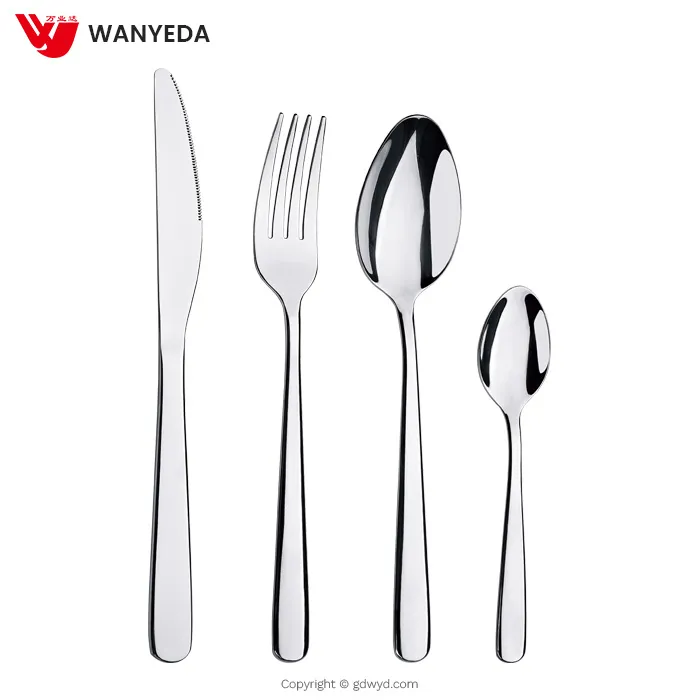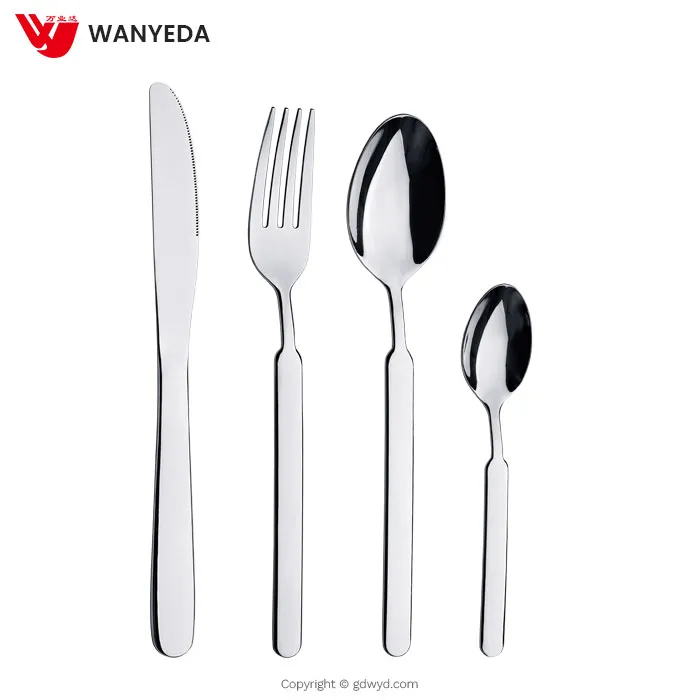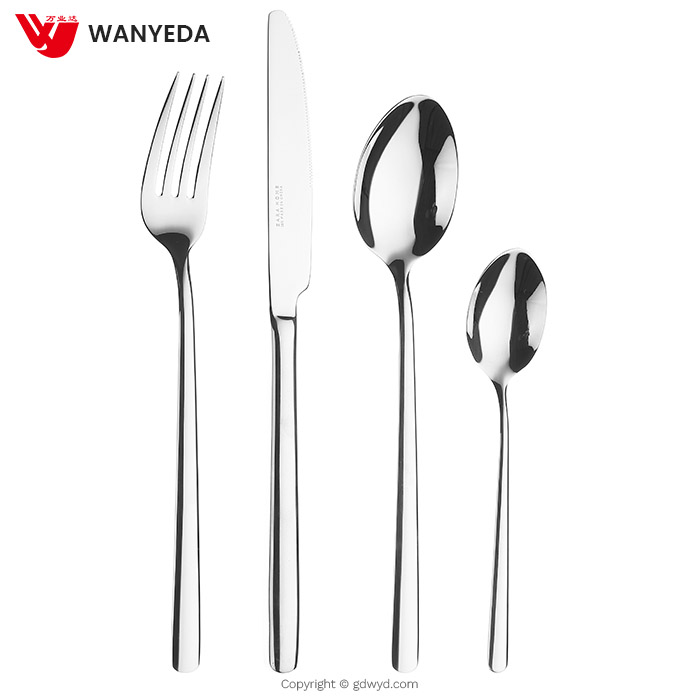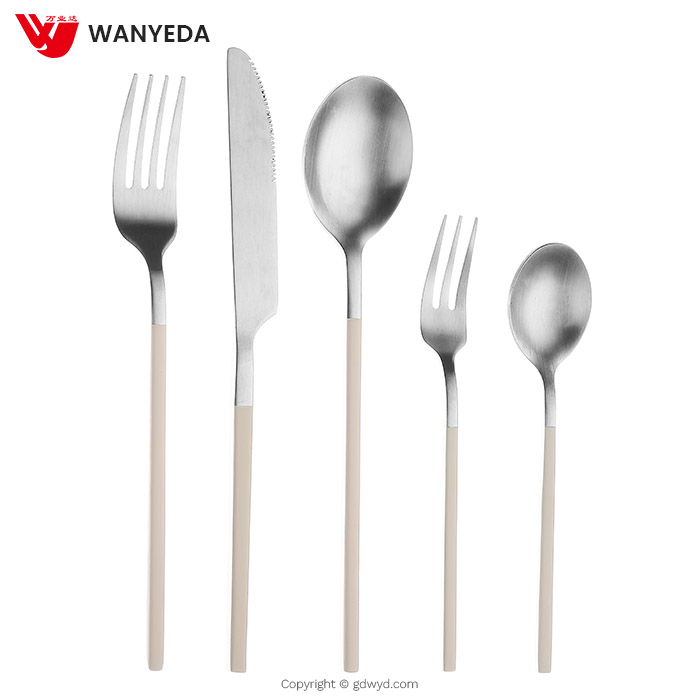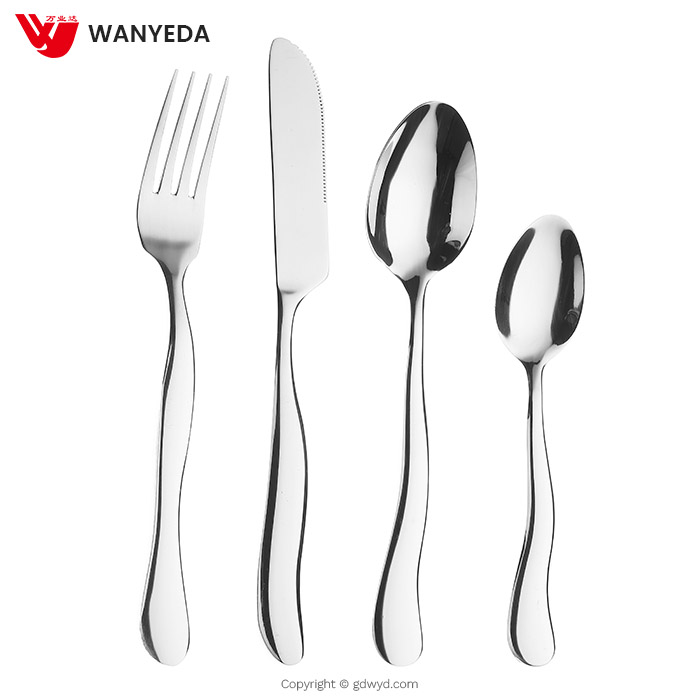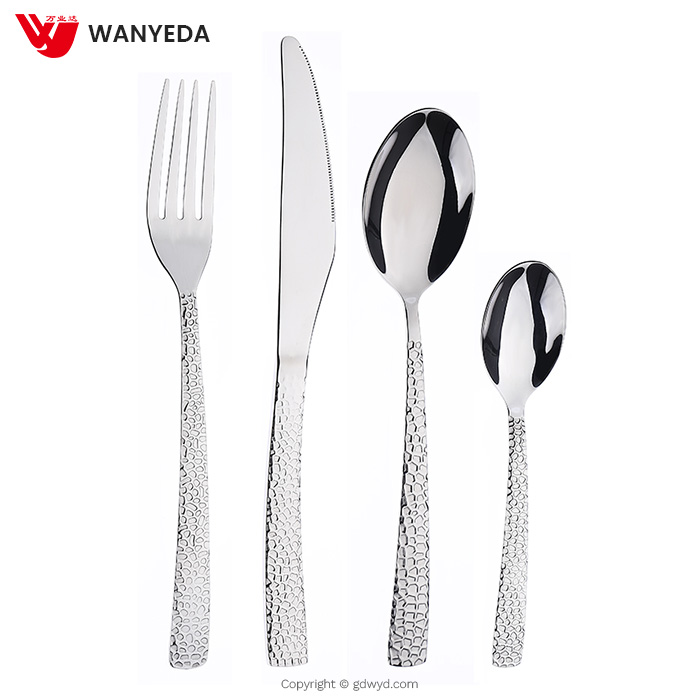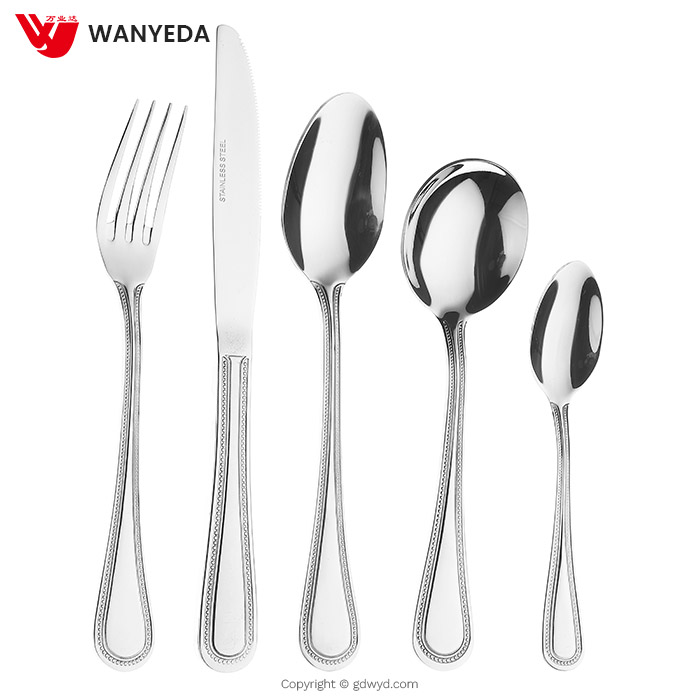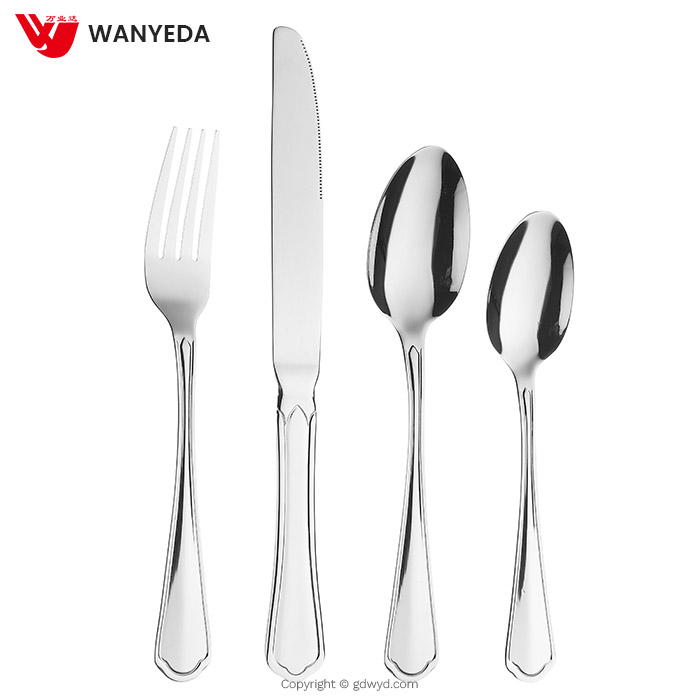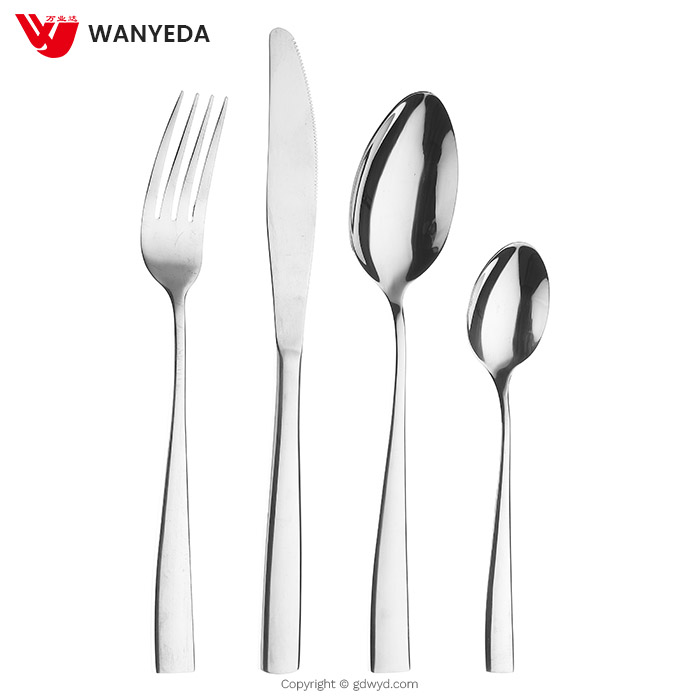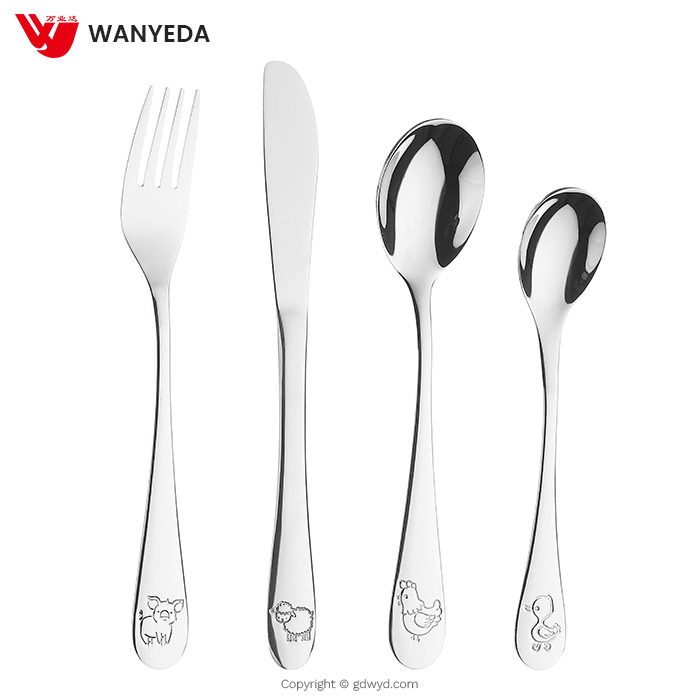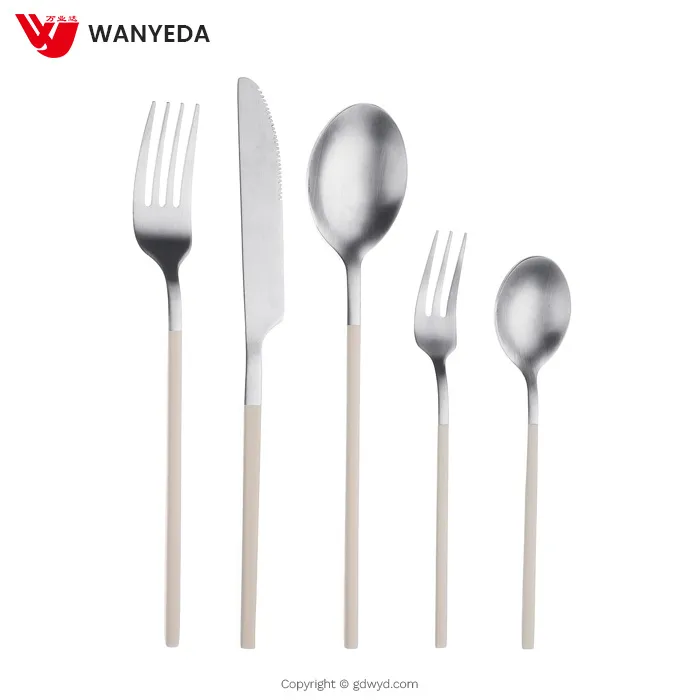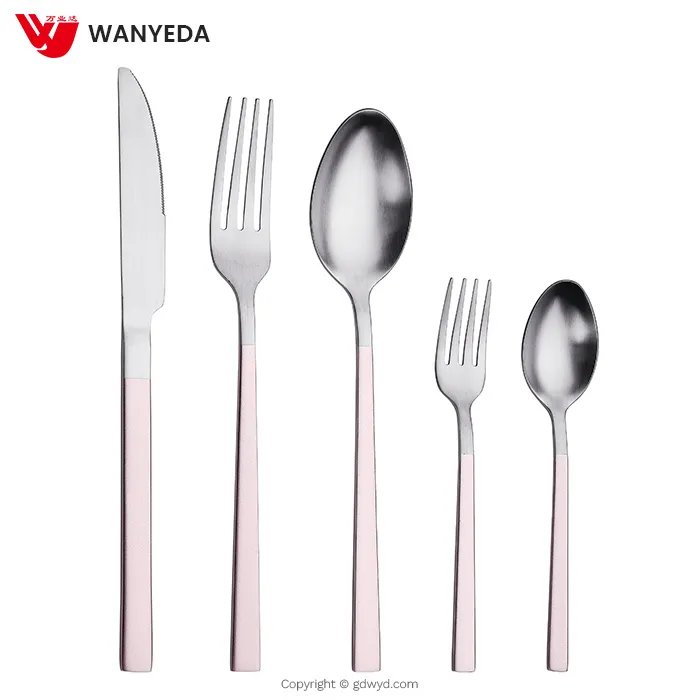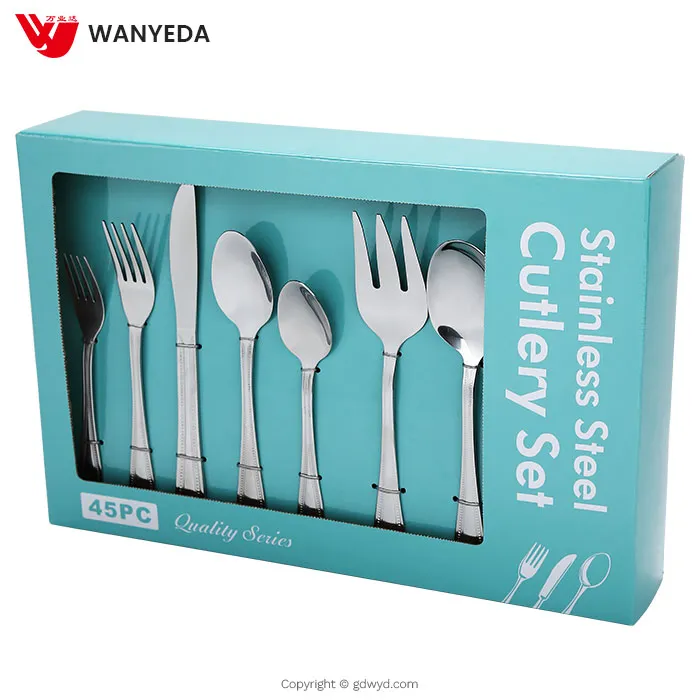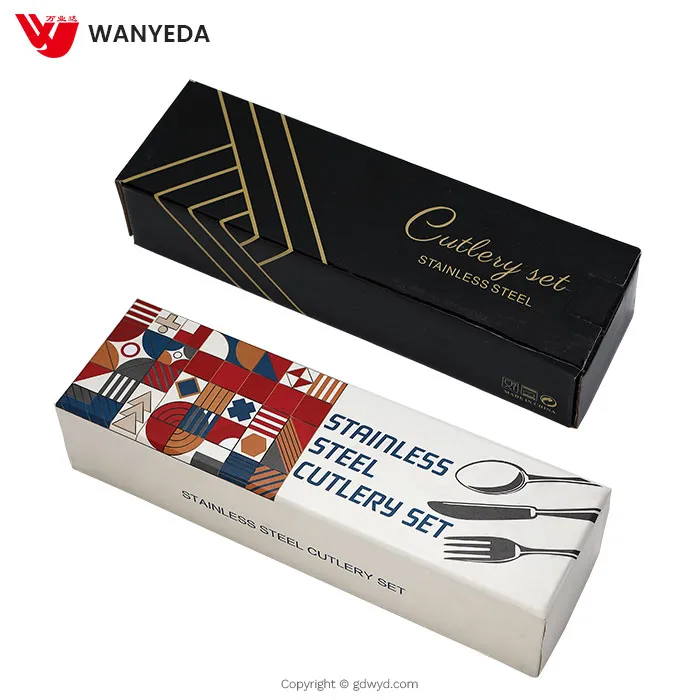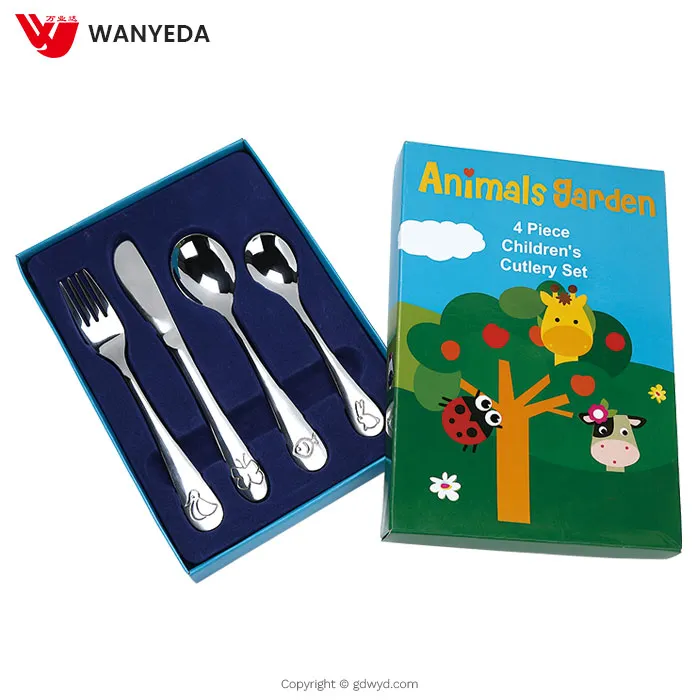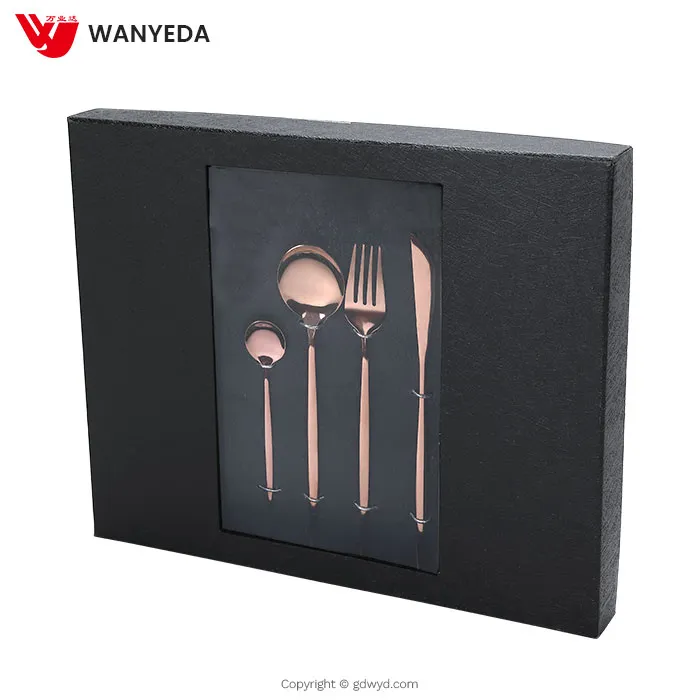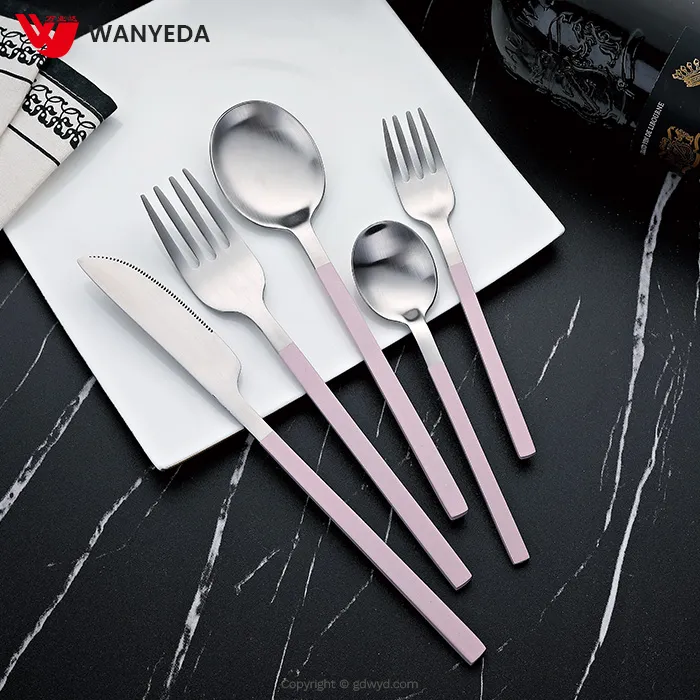
Silver Flatware Bulk Orders – Factory Direct Prices & Custom Branding
Top categories
The field of cutting-edge cutlery molding
WANYEDA stainless steel industrial co., ltd., established in 2007.Is a professional manufacturer engaged in the research, development, production, sale and service of Stainless steel tableware and kitchenware. We are located in Jieyang, Guangdong province with convenient transportation access.
About Silver Flatware
Types of Silver Flatware
The term “silver flatware“ encompasses the essential dining utensils—spoons, forks, and knives—that are integral to our meals. Traditionally crafted from genuine silver, today’s offerings are often made from stainless steel and referred to as “silverware.” These terms are frequently used interchangeably, yet it’s important to note that there exists a variety of silver flatware types available on the market.
- Silver Plate Flatware:
This category of cutlery is produced by electroplating a base metal, such as copper or brass, with a thin layer of silver. While the silver coating imparts an air of luxury, the underlying metal makes it a more budget-friendly alternative to pure or sterling silver. Silver plate flatware is available in a multitude of designs, catering to both classic and contemporary tastes.
- Sterling Silver Flatware:
Sterling silver flatware consists of a high-quality alloy that is 92.5% silver, complemented by 7.5% of other metals, typically copper. This composition enhances its strength and durability compared to pure silver, which can be too soft for practical use. Moreover, it boasts antimicrobial properties, rendering it a popular choice for cutlery, including spoons, forks, and knives.
- German Silver Flatware:
Often referred to as nickel silver or nickel bronze, German silver flatware is an alloy crafted from copper, nickel, and zinc. Despite its name, it contains no silver. It earns the “silver“ moniker due to its shiny appearance. This alloy is more affordable than genuine silver, yet it retains desirable properties such as corrosion resistance and a lustrous finish, making it a common material for flatware and various kitchen tools.
- Nickel Silver Flatware:
Nickel silver flatware is simply another term for German silver flatware. Both descriptions refer to the same alloy devoid of silver content, composed of copper, nickel, and zinc. This durable cutlery is resistant to corrosion and boasts a bright, shiny facade. As it lacks silver, it proves more cost-effective than other metal flatware alternatives.
- Silver Alloy Flatware:
Silver alloy flatware is created by combining silver with other metals to enhance its strength and longevity. A typical alloy for this application consists of 92.5% silver and 7.5% metals like copper. Alternatively, an alloy may be formed from a mix of silver, gold, and palladium. These combinations allow the flatware to retain valuable silver content while also being more suitable for daily use.
Designs of Silver Flatware
- Contemporary Modern:
This design draws inspiration from sleek, minimalist aesthetics, featuring clean lines and geometric shapes. Look for streamlined handles adorned with angular accents or unique textures that will surely impress at your next dinner gathering.
- Art Deco:
Evoking the glamour of the Roaring Twenties, Art Deco flatware showcases bold patterns and intricate detailing, often embellished with luxurious touches like gold plating. Whether you’re hosting a retro-themed soirée or simply aiming to infuse some vintage charm into your everyday meals, this style adds a touch of glitz.
- Organic Modern:
Marrying modern aesthetics with natural elements, this design often incorporates sustainable materials, such as bamboo or recycled stainless steel, with organic shapes and earthy textures. This approach elevates your dining experience while remaining true to eco-conscious values.
- Scandinavian:
Emphasizing simplicity and functionality, Scandinavian-inspired flatware highlights quality craftsmanship and practicality. Seek out pieces with minimalistic aesthetics, ergonomic handles, and durability—perfect for those who appreciate a tidy dining experience.
- Rustic Farmhouse:
Infuse warmth and charm into your table setting with rustic farmhouse flatware, which features vintage elements and handcrafted details. Look for fork and spoon sets with weathered finishes or decorative motifs, such as vines or flowers—ideal for family-style dinners or festive gatherings.
- Coastal:
Bring a relaxed, beachy vibe to every meal with coastal-inspired cutlery. Typically characterized by light, airy colors and motifs reminiscent of shells or waves, this design is perfect for outdoor dining or any occasion that calls for a laid-back atmosphere.
Scenarios for Silver Flatware
Silver cutlery finds its place in a myriad of settings, ranging from everyday dining to special occasions. As one of the most beloved materials for tableware, silverware is embraced by various cultures across the globe. Thanks to its versatility and timeless charm, silver flatware continues to enhance meals and gatherings in countless ways.
- Formal Occasions:
At formal events, such as weddings, anniversaries, or gala dinners, silver flatware is often employed to create an elegant atmosphere. Its presence adds a touch of sophistication and class. For instance, a bride may honour her husband’s family tradition by using antique silverware on their wedding day, rendering the occasion truly unique.
- Holiday Celebrations:
During festive seasons like Thanksgiving or Christmas, families often gather at home for elaborate meals. To elevate the dining experience, many choose to incorporate their silver cutlery sets, lending an air of significance and memorability to holiday feasts. These moments, shared around silverware, become cherished memories.
- Special Birthday Dinners:
On milestone birthdays—such as 50th or 75th celebrations—loved ones often host special dinner parties that feature silver flatware as a way to honour the person and the occasion. The use of silver utensils demonstrates the host’s affection and regard for the guest of honour on such a momentous day.
- High-End Restaurants:
Fine dining establishments, renowned for exceptional service and gourmet cuisine, typically aim to provide patrons with a luxurious experience. Wait staff meticulously polish silverware before each meal, allowing diners to savour their meals in an elegant setting.
- Afternoon Tea:
In various cultures, partaking in afternoon tea with light snacks is a cherished social activity. During such occasions, delicate silver knives may be employed for spreading cream on scones, while silver strings can be used to slice through cakes, adding an extra touch of refinement.
How to Choose Silver Flatware
Selecting the right silver flatware is a process that requires thoughtful consideration of several factors, including personal taste, lifestyle, and budget. By keeping these aspects in mind, one can discover the perfect silver flatware set that aligns with their needs and aesthetic preferences. Here are a few key factors to consider when choosing silver flatware:
- Determine the Type of Silver:
There exists a variety of silver types, including silver-plated flatware, sterling silver flatware, and more. For example, sterling silver flatware, comprising 92.5% pure silver, is more robust than regular silver due to its enhanced strength. Conversely, silver-plated cutlery sets feature a thin layer of silver over a base metal, resulting in a lighter and more economical option compared to sterling.
- Check the Craftsmanship and Quality:
When selecting silver flatware, it is vital to seek high-quality craftsmanship and exceptional artistry. Look for sturdy construction, well-defined patterns, and attention to detail in the finishing touches, such as polishing and shine. Additionally, consider the number of troy ounces of silver in the set, as this will influence its overall value.
- Consider the Design and Style:
Choosing the design and style of silver flatware should reflect personal preferences and complement existing tableware or decor. A wide range of designs is available, from classic and ornate patterns to modern and minimalist styles. One should also assess the shape of the handles for comfort and usability.
- Think About Maintenance and Care:
Both sterling silver and silver-plated flatware necessitate regular polishing to retain their shine and prevent tarnishing. However, silver-plated items tend to require less frequent upkeep, thanks to their protective coating. It is essential to consider how often you will clean your cutlery sets, as this will determine which type is best suited for your lifestyle.
- Set a Budget:
The price of silver flatware varies based on the type of silver used, design, and brand. Generally, silver-plated flatware is more budget-friendly than sterling silver, which is regarded as a higher-quality option. Establishing a budget is crucial, ensuring you select a set that offers the best quality and design within your financial parameters.
Q&A
Q1. What are the benefits of using silver flatware?
A1. Silver flatware possesses natural antimicrobial properties. The use of silverware can help eliminate certain bacteria in the mouth and gut. Additionally, it may enhance taste sensation for individuals with a diminished sense of taste.
Q2. Is silver flatware considered an antique style?
A2. While it’s often associated with vintage or formal dining settings, silver flatware is experiencing a resurgence in popularity. Its timeless elegance can seamlessly complement a variety of aesthetics, from traditional to contemporary.
Q3. Can silver flatware be used every day?
A3. Absolutely! Silver flatware can be employed for daily use, but it requires proper care to maintain its luster and prevent tarnishing.
Q4. How should silver flatware be cleaned?
A4. Hand-wash silver flatware in warm, soapy water, rinse thoroughly, and dry with a soft cloth. Special silver polish can be utilized to remove any tarnish.
Q5. Does silver flatware tarnish easily?
A5. Yes, silver flatware does tarnish; however, the frequency and speed of tarnishing depend on storage conditions and exposure to air and humidity. Keeping it in a tight, airless space can help mitigate tarnishing.


